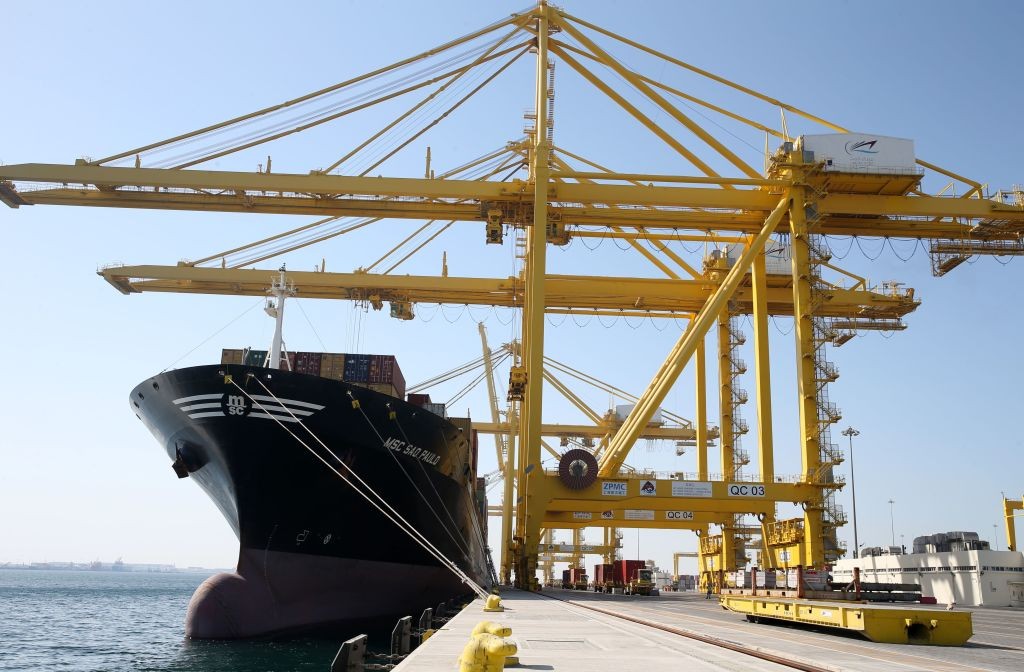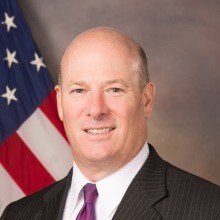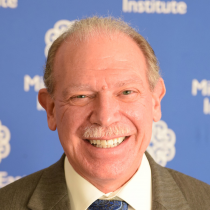

Introduction
In early June 2017, Saudi Arabia, the United Arab Emirates (UAE), Bahrain, and Egypt — the members of the so-called Anti-Terror Quartet — cut off diplomatic ties with Qatar and imposed an economic blockade of the country, leading to a deep division within the Gulf Cooperation Council (GCC). Two years on, we asked eight regional experts to weigh in on the current state of affairs and answer one key question: What are the prospects for resolving the Gulf crisis?
Viewpoints
-
Christopher Davidson
Christopher Davidson

For now a bitter stalemate, but the blockade will likely have an impact in time
Two years on, the “Qatar crisis” appears as intractable as ever, with the key protagonists seemingly locked in a bitter stalemate. Certainly, despite limited flurries of GCC diplomatic activity and the survival of the Dolphin Gas project (one of the Abu Dhabi crown prince’s early career achievements and thus firmly ring-fenced), there is little to suggest that Qatar’s relations with Saudi Arabia and the UAE are likely to improve any time soon. Traditional regional resolution methods, most of which have relied on trusted arbiters such as the Kuwaiti Ministry of Foreign Affairs, have clearly fallen to the wayside, as have numerous track two efforts relying on tribal or intermarriage ties.
In many ways the deadlock is understandable, as notwithstanding recent claims that the dispute was contrived as a “gas grab” from resource-rich Qatar, most agree that it has always really been a quarrel over the role of political Islam in the Gulf, and that — from Riyadh and Abu Dhabi’s perspective — Doha has still failed to sever its links with a host of potentially dangerous Islamist organizations. Undoubtedly frustrated, especially after a once contemplated paramilitary solution fizzled out due to a lack of U.S. support, Saudi Arabia and the UAE have had little choice but to hunker down and try to apply “slow-bleed” economic pressure.
Thus far, Qatar has put on a strong face. Managing to keep vital transport and communication lines open, imports arriving, and the dream of World Cup 2022 alive, Doha has been deft in its logistical maneuvering. Equally importantly, it has also been swift in mobilizing a vast array of “soft power” and covert assets to convince the world that its adversaries are the real “baddies.” In this context a huge range of well-financed media outlets, PR agencies, think tanks, and private sector intelligence outfits have been fighting Doha’s corner and, thus far, seem to have been winning.
Such optimism, however, may end up being misplaced. Although there are of course numerous macro-level variables that could still lead to a swifter ending or effective side-lining of the crisis (including abrupt U.S. policy changes or even a regional conflict with Iran), it is also very likely that Riyadh and Abu Dhabi’s economic blockade will eventually begin to deliver significant results. After all, despite their haphazard PR, Saudi Arabia and the UAE are by far the biggest Arab economies with their financial clout far outweighing Qatar’s both inside and outside the region.
Christopher Davidson is a former reader in Middle East politics at Durham University in England and a former assistant professor at Zayed University in the UAE. His books include Dubai: The Vulnerability of Success, Abu Dhabi: Oil and Beyond, After the Sheikhs, The Persian Gulf and Pacific Asia, and Shadow Wars: The Secret Struggle for the Middle East.
-
Shareefa Al-Adwani
Shareefa Al-Adwani

An opportunity has arisen, but only time will tell what comes of it
The GCC’s ruling regimes have long time horizons, and are thus more likely to adhere to their international commitments as they are able to reap the long-term benefits, such as enhanced regional security. At the same time, proximity is associated with a higher likelihood of disputes erupting among neighbors — and grudges may be held for long periods of time. For the GCC countries, however, the current crisis and its prospects for resolution may be best understood through an old Bedouin saying: “I against my brothers. I and my brothers against my cousins. I and my brothers and my cousins against the world.”
The “world” has come knocking on the GCC’s door: The tanker and drone attacks in the UAE and Saudi Arabia in mid-May alarmed the region’s leaders. In response, Saudi Arabia’s King Salman suggested an ad hoc GCC summit in Mecca, but was unclear if Qatar would be invited. Iran subsequently offered to sign bilateral non-aggression pacts with each of the GCC states, a move that could potentially split the bloc further and complicate matters regarding international security commitments to its superpower ally. The offers, fraught with political complexities, and the threat against the oil and gas trade impact the national security of all the GCC states and require a united response to ensure regional stability. To that end, King Salman extended an invitation to the summit to Qatar on May 26th, transcending the boycott.
The May 30th meeting has great potential to be the catalyst for a détente between the GCC “cousins.” At a minimum it will provide an opportunity for direct dialogue to take place at the highest levels, temporarily deescalating overall tensions. In the best-case scenario, GCC leaders could parlay the discussions into a broader conversation about a regional security framework, inclusive of intra-GCC issues. However, even this most optimistic outcome would require many months for complete resolution. A commitment to cooperation on these issues is necessary for regional stability, but it will take time — time these ruling regimes have.
Shareefa Al-Adwani is an assistant professor of political science and the director of the Center for Gulf Studies at the American University of Kuwait.
-
DB Des Roches
DB Des Roches

Welcome to the new normal
Two years on, the GCC crisis between Qatar and her neighbors has become routinized. There are no signs that the conflict will end, and few incentives for it to do so.
The blockading powers (Saudi Arabia, the UAE, and Bahrain with support from Egypt) have shown that they have the ability to maintain their stance indefinitely at minor cost. Indeed, the only real inconvenience for them seems to be the requirement to pirate Qatari satellite feeds of European soccer matches, blocking out the Qatari “Bein” network chyron with an improvised “Beout.”
Qatar claims that it has also managed to adapt to the new normal, but no doubt this has come at some cost — one which may be higher than is generally thought. While Qatar has more incentive to settle this kerfuffle than does the other side, there is no indication that it is willing to meet the conditions put forward.
The United States is an interested, frustrated, but not decisive player in this affray. Both sides have sought to draw the United States over to their side and seem to believe that Washington can dictate an outcome on their own terms. This belief is reflected in the increase in money spent on lobbyists in DC by both parties in the dispute.
Even in the midst of this standoff, the countries have been careful to ensure that security ties with the U.S. remain intact. Qataris have participated in military exercises in the kingdom, and Saudi, Emirati, and Bahraini representatives remain at the various headquarters at Al Udeid Airbase in Qatar. There seems to be a tacit recognition that this dispute not be allowed to imperil the overall security structure of the region.
So we have a situation in which neither side shows any sign of winning, which is counterproductive in the extreme, and which shows no sign of ending. Welcome to the new normal.
DB Des Roches is an associate professor at the National Defense University’s Near East South Asia Center for Strategic Studies. His remarks do not reflect the views of any U.S. government agency or body.
-
Dania Thafer
Dania Thafer

The stakes are high and the incentives to resolve the crisis are low
To look at the Gulf crisis through the lens of the 2014 spat or the beginning of the blockade in 2017 would be myopic. Although there have been some longstanding tensions between the two sides, the roots of the Gulf crisis took hold amid the competition to secure a prevailing narrative during the establishment of a new regional order in the post-Arab Spring era. Concurrent with the change in the regional order has been the ascension of younger leadership to some of the most powerful positions in the Gulf. These changes brought with them an end to the traditional hierarchical mechanisms of rapprochement and problem-solving that defined the inter- and intra-state relations in the GCC. In this context, there has been an unprecedented level of vilification within the public discourse that has made this crisis become personal and difficult to resolve in a manner that is face-saving for all parties.
In fact, rather than impending rapprochement, signals continue to suggest that the Gulf crisis is becoming an institutionalized reality in the GCC. The media war continues and shows no signs of slowing down or indication that the parties are moving toward reconciliation. As the blockade drags on and the initial shock passes, the incentives to negotiate and the bargaining power to resolve the crisis continue to diminish in many regards. Qatar implemented new infrastructure and means of conducting business to ensure its sustainability, while the majority of the blockading states’ losses have already been absorbed. Therefore, in this context, to increase the likelihood of rapprochement there needs to be a strong common threat to bring these states together or an additional incentive to get all parties to the negotiation table.
Dania Thafer is the executive director at Gulf International Forum.
-
Gerald Feierstein
Gerald Feierstein

No breakthrough, but cooperation on common threats may be possible
In the relatively recent past, most analysts had concluded that we were unlikely to see any progress anytime soon in resolving the intra-GCC dispute that erupted two years ago. The conflict was more or less frozen. Both sides were dug in, and neither side appeared to be under any pressure to make concessions toward ending the standoff.
The current increase in tension in the region, triggered in particular by the recent U.S.-Iran war of words, may have forced the parties to set aside their intramural disputes momentarily to address the immediate threats to regional security and stability. News that the Qataris have accepted Saudi Arabia’s invitation to attend the hastily arranged GCC summit in Mecca is a positive sign that the parties can work together when absolutely necessary. Moreover, all of the GCC states appear to recognize that, regardless of their fundamental differences, all share a common interest in cooperating to confront challenges to their security.
Nevertheless, a celebration of the end of the GCC dispute would be highly premature. The fundamental differences between Qatar and its GCC neighbors along with Egypt — the self-described Anti-Terror Quartet — remain unresolved. The issues related to the role of political Islam in the region and Gulf relations with Iran continue to be fundamental dividing points within the GCC. The dispute that erupted in June 2017 reflects a Saudi and Emirati determination that these internal differences over fundamental issues of policy and perception, tolerated for decades, would no longer be acceptable. Instead, membership in the GCC would require at least a level of internal policy consistency. It remains uncertain whether Riyadh and Abu Dhabi will win that argument or be forced back to the status quo ante. But the current uptick in regional tensions will likely put that debate on the back-burner, at least for the time being.
Amb. (ret.) Gerald Feierstein is MEI’s senior vice president.
-
Giorgio Cafiero
Giorgio Cafiero
All signs suggest the GCC rift could become permanent
As the parties prepare to meet for the GCC summit in Mecca, no resolution to the bloc’s internal rift appears on the horizon. The parties seem no closer to mending fences than they were at the start of the row. A host of factors justify such pessimism: The zero-sum nature of this emotional dispute, the role of nationalism, and the fact that Doha has proven capable of not only surviving but even thriving amid the blockade. All signs suggest that this rift could become a permanent reality for the regional order.
After two years of vicious media attacks on Qatar, it would be very hard for the blockading states — known as the Anti-Terror Quartet (ATQ) — to take back the accusations they have leveled against Doha that the emirate is a leading sponsor of terrorist organizations. A rapprochement that would come without Qatar essentially relinquishing its sovereignty would require ATQ members to choose between normalizing ties with a country that they have depicted as a pariah in the Arab world or reversing such narratives.
For the blockading states, it would be humiliating to lift or even ease the blockade without having achieved any of their objectives, as outlined in the 13 demands of 2017. If relations are restored without Doha having made any changes, both Abu Dhabi and Riyadh would be seen as weak. At a time when crown princes Mohammed bin Zayed and Mohammed bin Salman are seeking to project strength in the Middle East, they cannot afford to appear weak on the Gulf dispute. Moreover, even if Qatar’s government and the ATQ states were to compromise to restore ties, the dispute’s social dimensions would remain in play. This crisis has negatively impacted families and intra-GCC relations on many levels with respect to restrictions on travel and freedom of movement, and younger GCC nationals will likely remember the row for decades to come.
What remains to be seen is whether the U.S. will change its position on the Gulf dispute, possibly to exert pressure on one side to make major concessions. Such a shift in Washington’s foreign policy, potentially following the 2020 presidential election, could be a game changer in the GCC crisis.
Giorgio Cafiero is the CEO and founder of Gulf State Analytics, a geostrategic consultancy based in Washington, DC.
-
Firas Maksad
Firas Maksad

Saudi is softening its approach, but détente seems more likely than a breakthrough
Last week, Qatar confirmed that Sheikh Tamim bin Hamad al-Thani received an invitation from rival Saudi Arabia to participate in the two Mecca summits convened to discuss Iran’s threat to regional security. Ultimately, Qatar’s emir decided to send a lower-level emissary, but there have been a number of signs — including a prior invitation to attend the December 2018 GCC meeting in Riyadh and comments in October by the Saudi crown prince complementing Qatar on the resiliency of its economy — that Saudi Arabia is softening its approach to Qatar.
Hopes of a breakthrough, however, should be tempered by hard realities that predate the latest iteration of the crisis that erupted in June 2017. Although significantly smaller and less influential than Saudi Arabia, since the overthrow of the emir by his son in 1996, Qatar has chosen to counter-balance rather than cooperate with its neighbor, and has proved quite adept at it. This coincided with the rise of Qatar as a leading player in the global gas market and a skyrocketing GDP that expanded from $8bn to over $210bn in less than a decade. The newfound wealth allowed Doha to buy protection by funding the expansion of the U.S. military presence at the Al Udeid Airbase, and pioneer Arab Gulf engagement with Israel by signing landmark economic agreements with late Israeli Prime Minister Shimon Peres.
As it carved out an independent path, Qatar may have initially played defense against Saudi Arabia, but the Arab uprisings of 2011 saw it go on the offensive. Utilizing its overflowing coffers, the potency of its pan-Arab news channel Al Jazeera, and a burgeoning partnership with Turkish President Recep Tayyip Erdogan, Doha sought to become a regional power by helping fuel the rise of its allies in the Muslim Brotherhood in Egypt, Tunisia, Libya, and elsewhere.
Although Qatar’s regional power play has since been challenged by Saudi Arabia, the UAE, and others, the fundamental power dynamics governing Saudi-Qatari relations have not changed. Qatar continues to see a better path for itself outside the umbrella of the Saudi-dominated GCC rather than within it. So irrespective of the level of Qatari representation at the Mecca summit, absent unforeseen circumstances, a détente rather than a breakthrough is much more likely.
Firas Maksad is the director of the Arabia Foundation and an adjunct professor at the George Washington University’s Elliott School of International Affairs.
-
Courtney Freer
Courtney Freer

For now, the rift isn’t hurting either side enough to spur capitulation
Despite some apparent moves toward détente — Qatar’s invitation to the Mecca conference, the Bahraini prime minister’s call to the Qatari Emir Sheikh Tamim, and Saudi and Bahraini delegations making their first official visit to Qatar since the start of the blockade in May — I see the lines in the Gulf being drawn more permanently, given regional dynamics and the American role in the Gulf. It seems that the U.S.-Saudi-Emirati-Bahraini-Egyptian axis is increasingly pitted against the Turkish-Qatari axis in conflicts across the region, such as Libya and Sudan, as well as taking different lines when it comes to domestic politics regarding Islamists and political reform more broadly. Further, hearings at the International Court of Justice continue, having arisen from Qatari complaints of Emirati discrimination against its citizens and the implementation of “a campaign of violence and hatred;” the UAE meanwhile this month sought an injunction against Qatar, stating that it is using “cheap tricks” and blocking Emiratis from gaining visas. As a result, I am not optimistic about a resolution emerging in the short to medium term, barring major regional shifts.
Further, both sides of the conflict have been very public about their stances — with the Emirati, Saudi, and Egyptian press continuing to publish stories about Qatar’s links to terrorism, the Muslim Brotherhood, and their domestic opposition movements, and with Qatar continuing to rebuff these claims — making it difficult for either side to back down while saving face. Indeed, it is difficult to imagine what type of settlement could ease tensions on both sides without making either look like the surrendering party — a likely demand from citizens who have become increasingly involved in a crisis that has affected daily life for many.
Ultimately, the rift does not appear to be hurting either side enough to spur capitulation. Qatar has found new trading partners, and its economy has recovered from the initial shock of the blockade, while the Emiratis, Saudis, Bahrainis, and Egyptians enjoy increasing support from Washington in their fights against both the Muslim Brotherhood and Iran. Absent a change in regional calculations of power, which may be altering now as tensions with Iran increase and calls for a unified Gulf emerge with the Mecca conference, I do not see how a potential resolution could arise to satisfy both sides.
Courtney Freer is a research fellow with the Kuwait Program at LSE’s Middle East Center.












